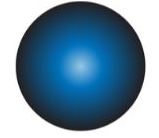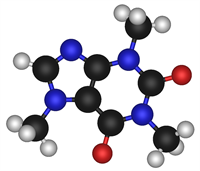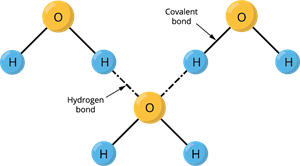
PUMPA - SMART LEARNING
எங்கள் ஆசிரியர்களுடன் 1-ஆன்-1 ஆலோசனை நேரத்தைப் பெறுங்கள். டாப்பர் ஆவதற்கு நாங்கள் பயிற்சி அளிப்போம்
Book Free DemoEven though atoms are the building blocks of molecules, they vary from molecules in many ways. The below table consolidates the major difference between atoms and molecules.
| S.No. | Atom | Molecule |
| 1. | An atom is the smallest particle of an element.  Atom | A molecule is the smallest particle of an element or compound.  Molecule |
| 2. | Except in noble gases, atoms do not exist in free state. | Molecule exists in a free state. |
| 3. | Except for some noble gases, other atoms are highly reactive. | Molecules are less reactive. |
| 4. | Chemical bonds do not exist between atoms. | Atoms in a molecule are held by chemical bonds. Example: Water molecule  Chemical bonds such as covalent and hydrogen bonds exist in the water molecule. |
Mole Concept
So far, we have discussed about matters in terms of individual atoms and molecules. The masses of the elements are measured in atomic mass units (amu), which provide a relative scale. Since atoms have such small masses, no scale can be devised to weigh them in calibrated atomic mass units. We deal with macroscopic samples containing an enormous number of atoms in any real situation. As a result, having a specific unit to describe a high number of atoms is useful.
The concept of a 'unit' to represent a specific number of objects is not new. For example, a pair (\(2\) items) and a dozen (\(12\) items) are well-known units. Moles are the units of measurement used by chemists to measure atoms and molecules. As a result, you can see that the term "mole" refers to the number of particles.
In the SI system, the mole (or mol) is the amount of a substance that contains as many elementary entities (atoms, molecules, or other particles) as there are atoms in exactly \(12\) \(g\) (or \(0.012\) \(kg\)) of the carbon-\(12\) isotope.
Experimentally, the number of atoms in \(12\) \(g\) of carbon-\(12\) is determined. This is called 'Avogadro's number' (\(N_A\)), named after an Italian scientist Amedeo Avogadro who proposed its significance. Its value is \(6.023\times10^{23}\). Hence, one mole of a substance contains \(6.023\times10^{23}\) entities. Thus, \(5\) moles of oxygen molecules contain \(5\times6.023\times10^{23}\) molecules.